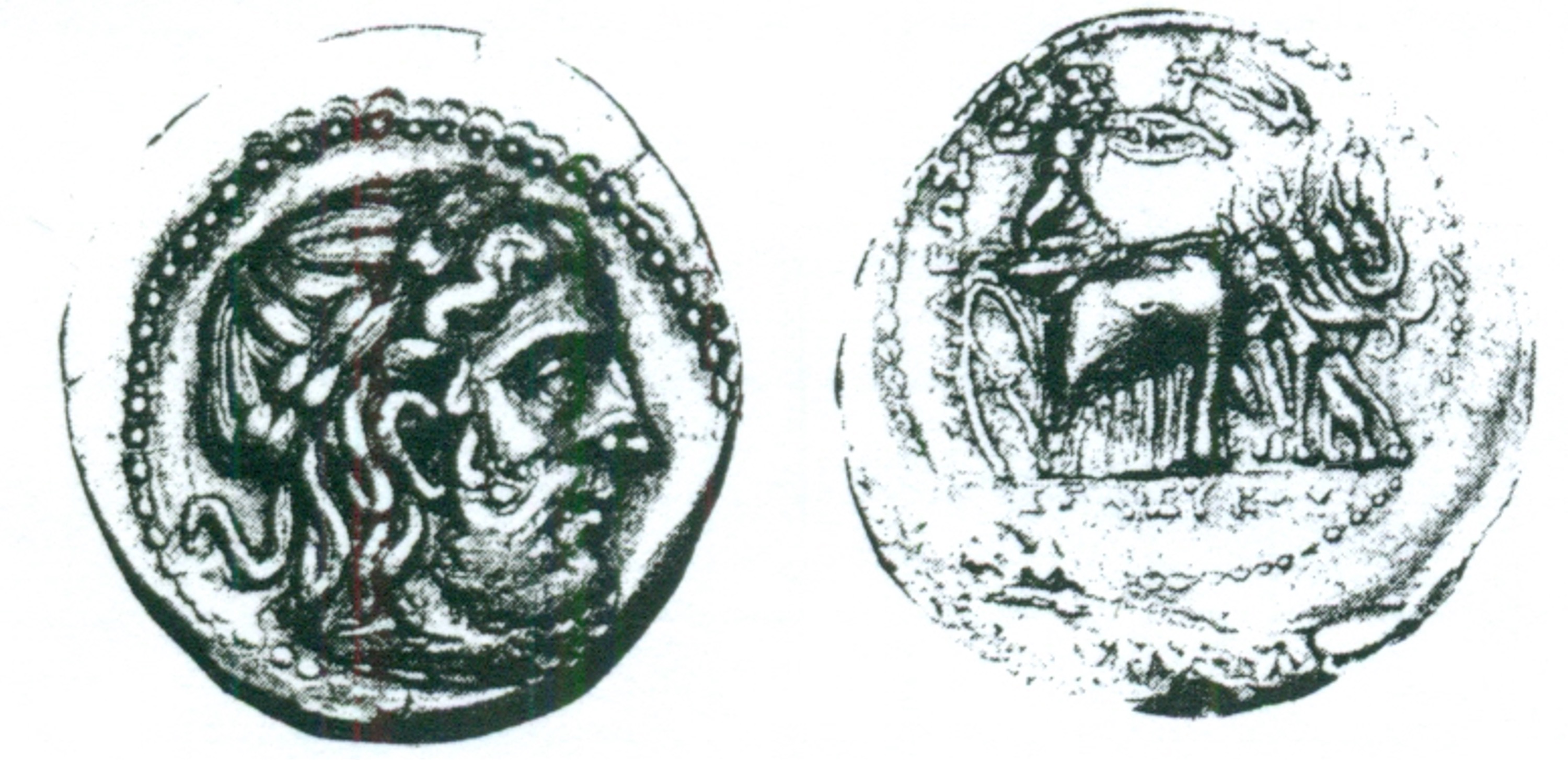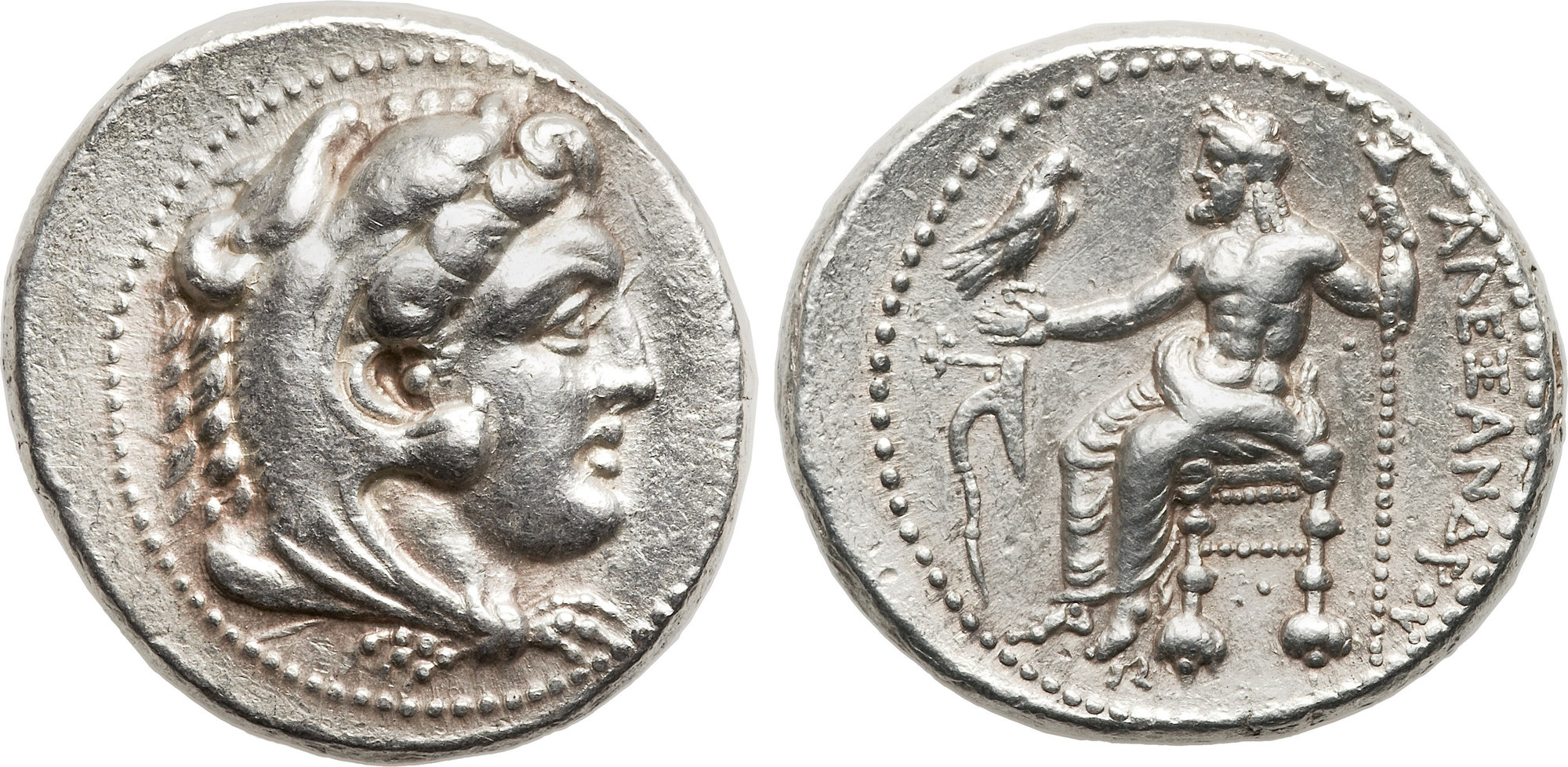300 BCE - 295 BCE | ΒΑΣΙΛΕΩΣ ΣΕΛΕYΚΟΥ
Overstriking coin
SO 1150 - Seleuceia ad Tigrim over Tarsus.jpg
|
|
Sale(s)Sale(s) ᵖ:
|
Classical Numismatic Group, 36, 5-6 Dec. 1995, 2046
|
|
|
|
Description
| ObverseInscription or printing placed on the obverse.:
|
Head of Zeus right, wearing laurel wreath. Border of dots.
|
ReverseInscription or printing placed on the reverse.:
|
ΒΑΣΙΛΕΩΣ ΣΕΛΕYΚΟΥ (Greek) Athena standing right in quadriga drawn by four horned elephants, holding shield ans spear. Above, anchor. Border of dots.
|
Mint and issuing power
Chronology
| FromIdentifies the initial date in a range assigned in a numismatic context. 300 BCE toIdentifies the final date in a range assigned in a numismatic context.. 295 BCE
|
Hellenistic 323-30 BC  periodTime period of the numismatic object. periodTime period of the numismatic object.
|
Physical description
MetalThe physical material (usually metal) from which an object is made.: Silver 
|
WeightWeight of the numismatic object (in grams). in grams: 17.0217.02 g <br />17,020 mg <br />
|
DenominationTerm indicating the value of a numismatic object. Examples: tetradrachm, chalkous, denarius.: tetradrachm 
|
|
|
|
|
References
Description
| ObverseInscription or printing placed on the obverse.:
|
Head of Herakles right, wearing lion's skin (visible: back of the lion's mane under Zeus's chin).
|
ReverseInscription or printing placed on the reverse.:
|
AΛΕΞΑΝΔPΟY (Greek) Zeus seated left, holding eagle and sceptre (visible: right leg of the throne).
|
Mint and issuing power
Chronology
| FromIdentifies the initial date in a range assigned in a numismatic context. 332 BCE toIdentifies the final date in a range assigned in a numismatic context.. 300 BCE
|
Hellenistic 323-30 BC  periodTime period of the numismatic object. periodTime period of the numismatic object.
|
Physical description
| DenominationTerm indicating the value of a numismatic object. Examples: tetradrachm, chalkous, denarius. ᵖ:
|
tetradrachm 
|
StandardStandard. ᵖ:
|
Attic
|
References
References
- ^ Houghton, Arthur - Lorber, Catharine (2002), Seleucid coins : a comprehensive catalogue. Part 1, Seleucus I through Antiochus III, New York - Lancaster - London, 2 v. (xxxviii, 488 p. + 300 p.), 101 pl.
- ^ Price, Martin Jessop (1991), The Coinage in the Name of Alexander the Great and Philip Arrhidaeus: a British Museum Catalogue, 2 vol., Zürich-London, 637 p., 637 p., clix pl.


